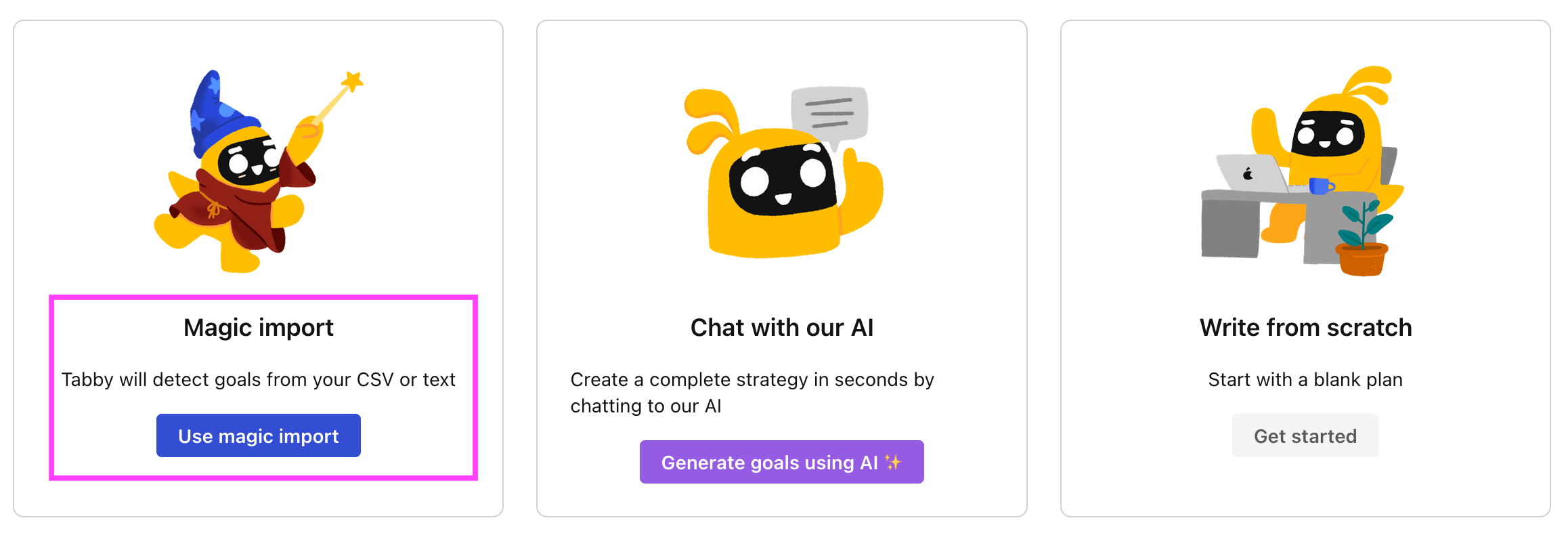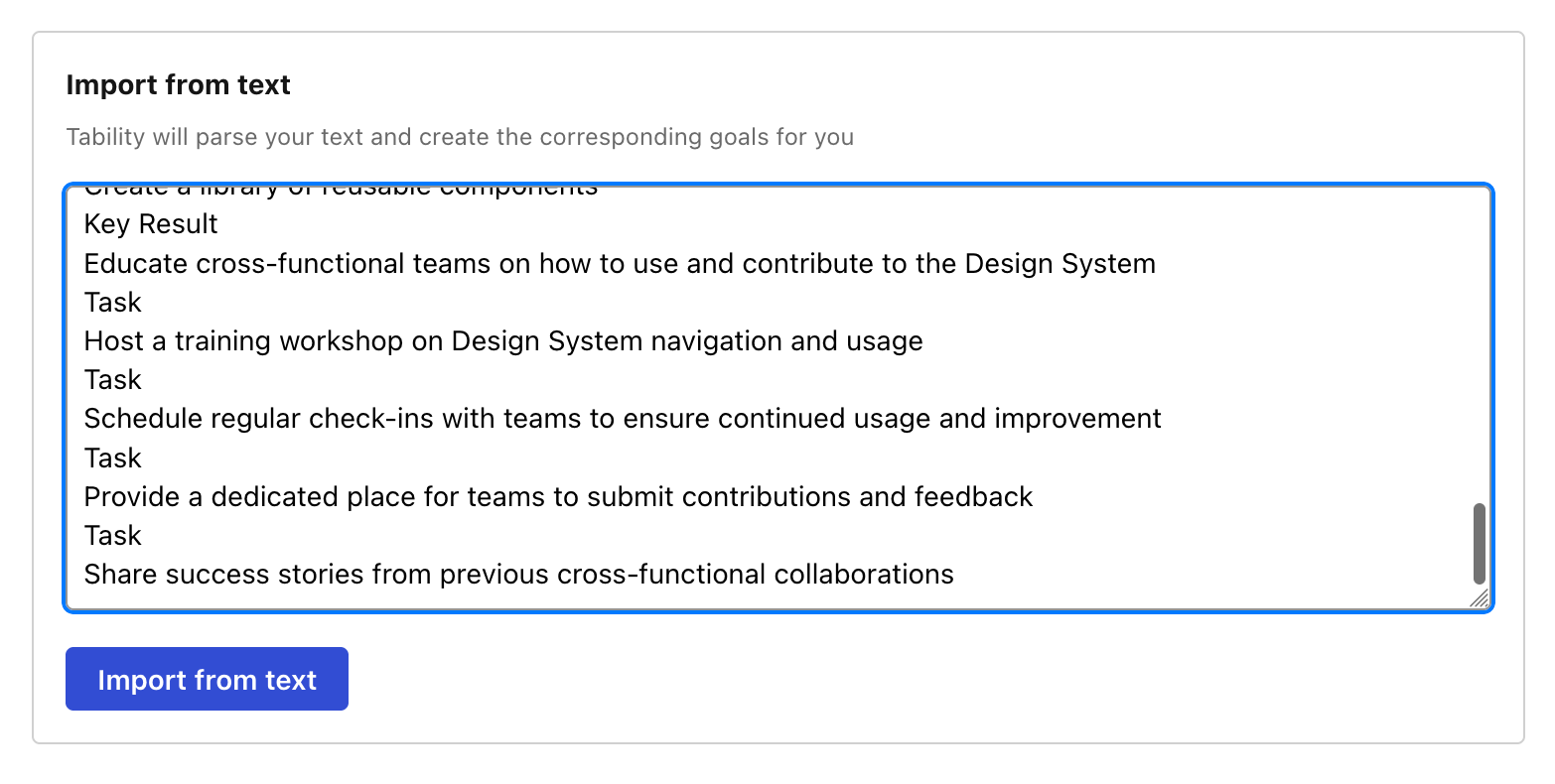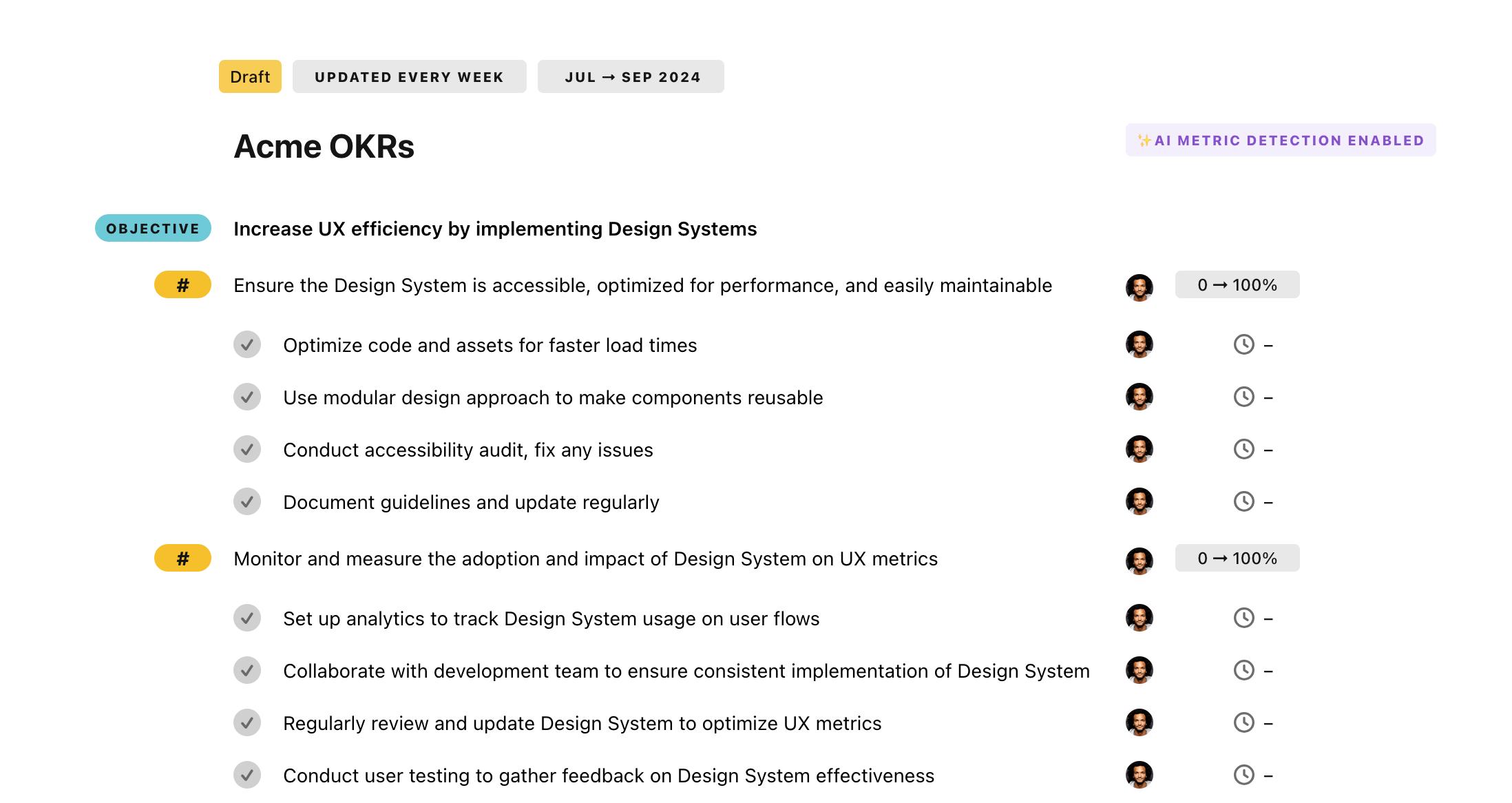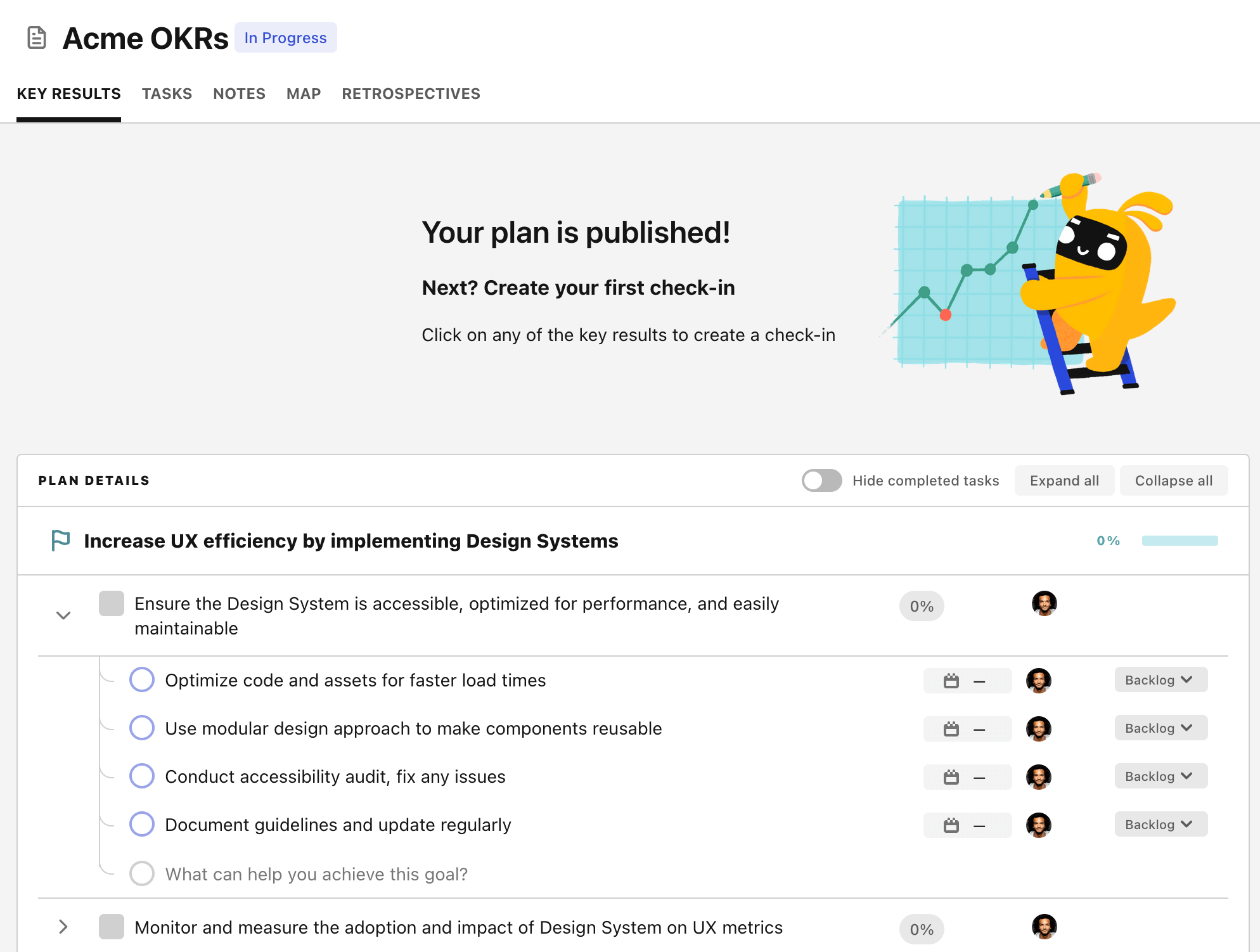OKR template to improve discipline, attendance, and turnaround time (TAT)
Your OKR template
The second objective is to minimize employee tardiness by 25% by introducing stricter discipline measures. The organization plans to impose penalties for chronic tardiness, implement rigor in the existing disciplinary policies, and promote the proactive role of management in enforcing employee punctuality.
The last objective intends to lessen the Turnaround Time (TAT) for tasks by 20% by bettering current processes. The organization plans to create streamlined processes that enhance productivity, pinpoint inefficiencies in present task procedures and instruct staff on the new, improved routines.
The desired outcome is a positive change in attendance rates, reduction in tardiness and tasks completed with increased efficiency. This will not only boost morale but also greatly enhance overall productivity.
ObjectiveImprove discipline, attendance, and turnaround time (TAT)
KRImprove overall attendance rate by 15% via incentivizing perfect attendance
Organize competitions or challenges to promote attendance
Implement a rewards system for students with perfect attendance
Communicate the benefits of perfect attendance to students
KRDecrease employee tardiness by 25% through implementing stricter discipline measures
Introduce penalties for chronic tardiness
Implement strictness in the existing disciplinary policies
Increase management's role in employee punctuality enforcement
KRReduce TAT for tasks by 20% through streamlining existing processes
Develop streamlined processes improving productivity
Identify inefficiencies in current task procedures
Implement and train staff on streamlined processes
How to edit and track OKRs with Tability
You'll probably want to edit the examples in this post, and Tability is the perfect tool for it.
Tability is an AI-powered platform that helps teams set better goals, monitor execution, and get help to achieve their objectives faster.
With Tability you can:
- Use AI to draft a complete set of OKRs in seconds
- Connect your OKRs and team goals to your project
- Automate reporting with integrations and built-in dashboard
Instead of having to copy the content of the OKR examples in a doc or spreadsheet, you can use Tability’s magic importer to start using any of the examples in this page.
The import process can be done in seconds, allowing you to edit OKRs directly in a platform that knows how to manage and track goals.
Step 1. Sign up for a free Tability account
Go tohttps://tability.app/signup and create your account (it's free!)
Step 2. Create a plan
Follow the steps after your onboarding to create your first plan, you should get to a page that looks like the picture below.

Step 3. Use the magic importer
Click on Use magic import to open up the Magic Import modal.
Now, go back to the OKR examples, and click on Copy on the example that you’d like to use.

Paste the content in the text import section. Don’t worry about the formatting, Tability’s AI will be able to parse it!

Now, just click on Import from text and let the magic happen.

Once your example is in the plan editor, you will be able to:
- Edit the objectives, key results, and tasks
- Click on the target 0 → 100% to set better target
- Use the tips and the AI to refine your goals
Step 4. Publish your plan
Once you’re done editing, you can publish your plan to switch to the goal-tracking mode.

From there you will have access to all the features that will help you and your team save hours with OKR reporting.
- 10+ built-in dashboards to visualise progress on your goals
- Weekly reminders, data connectors, and smart notifications
- 9 views to map OKRs to strategic projects
- Strategy map to align teams at scale